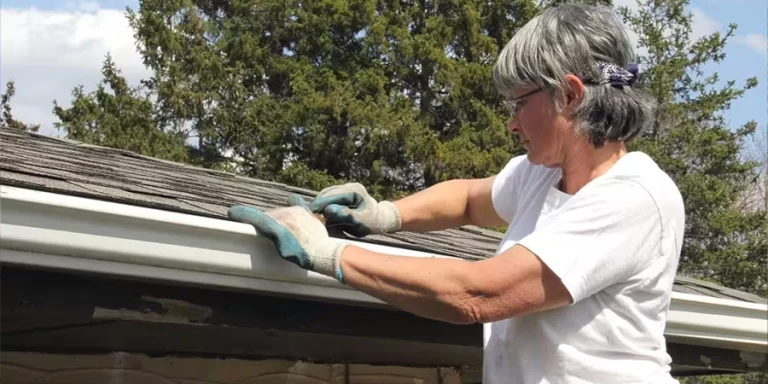How to Prevent Roof Leaks
A Comprehensive Guide

A roof is one of the most crucial components of any building structure, providing protection against the elements and maintaining the overall integrity of the structure. One of the most common and potentially damaging issues homeowners face is roof leaks. Not only can they cause immediate damage to the interior of your home, but they can also lead to long-term structural issues and mold growth if left unchecked. In this comprehensive guide, we will explore various strategies and steps you can take to prevent roof leaks and ensure the longevity of your roof.
Understanding the Causes of Roof Leaks
Before delving into prevention strategies, it’s essential to understand the common causes of roof leaks. By identifying the root causes, you can address them effectively and reduce the risk of leaks occurring in the first place. Some of the leading causes of roof leaks include:
- Poor Installation: Improper installation of roofing materials can lead to gaps, seams, and weak points that allow water to infiltrate.
- Age and Wear: Over time, roofing materials deteriorate due to exposure to harsh weather conditions, UV rays, and temperature fluctuations. This can lead to cracks, holes, and weakened areas prone to leaks.
- Missing or Damaged Shingles: Shingles can become loose, cracked, or completely detached due to wind, debris impact, or wear and tear. These gaps provide a direct pathway for water to enter.
- Flashing Issues: Flashing, the material used to seal joints and transitions on the roof (such as around chimneys, vents, and skylights), can deteriorate or become improperly sealed, leading to leaks.
- Clogged Gutters and Downspouts: When gutters and downspouts are clogged with leaves, debris, or ice dams, water can back up and seep under roofing materials, causing leaks.
- Condensation and Poor Ventilation: Improper attic ventilation can lead to condensation buildup in the attic. Over time, this moisture can damage roofing materials and create leaks.
- Tree Damage: Overhanging branches can scrape against the roof, dislodging shingles or damaging the roof’s protective layer.
- Harsh Weather Events: Severe storms, heavy rainfall, hail, and snow can cause immediate damage to your roof and create entry points for water.

Preventive Measures and Maintenance Tips
- Regular Inspections
Frequent inspections are a crucial part of preventing roof leaks. Ideally, you should inspect your roof at least twice yearly – in the spring and fall. Use binoculars to safely examine the roof’s condition from the ground, or hire a professional roofer to conduct a thorough inspection. Look for signs of damage, missing shingles, cracks, and areas where the roofing material seems compromised.
- Maintain Gutters and Downspouts
Clean and properly functioning gutters and downspouts are essential for channeling water away from your roof. Regularly remove debris such as leaves, twigs, and dirt from gutters. Ensure that downspouts are clear and direct water at least 3 feet away from the foundation. Installing gutter guards can also help prevent debris buildup.
- Trim Overhanging Branches
Trees near your house can pose a risk to your roof if their branches hang over it. During storms or even regular windy conditions, these branches can scrape against the roof and damage shingles. Trim back any branches that could potentially cause such damage.
- Address Flashing Issues
Inspect the flashing around chimneys, vents, skylights, and other roof penetrations. If you notice any cracks, gaps, or signs of deterioration, repair or replace the flashing as needed. Properly sealing flashing with high-quality roofing cement can prevent leaks at these vulnerable points.
- Attend to Shingle Maintenance
Replace any missing or damaged shingles promptly. When replacing shingles, ensure that the new shingles are properly secured and sealed to prevent water infiltration. Regularly inspect the condition of your shingles and address issues promptly to prevent larger problems down the line.
- Ensure Proper Attic Ventilation
Proper attic ventilation is crucial for preventing moisture buildup that can lead to roof leaks. Make sure your attic is adequately ventilated to allow moisture to escape. Install vents as needed and ensure that insulation doesn’t block airflow.
- Professional Roof Inspections and Maintenance
Hiring a professional roofing contractor for regular inspections and maintenance can provide an expert eye and ensure that any potential issues are caught early. Professionals can also perform tasks such as resealing flashing, replacing damaged shingles, and addressing other maintenance needs effectively.
- Act Promptly After Severe Weather
After experiencing a severe weather event, such as a heavy storm, hail, or high winds, conduct a thorough inspection of your roof. Look for signs of damage, displaced shingles, or other issues that might have arisen due to the weather. Timely action can prevent minor issues from escalating into major leaks.
- Invest in High-Quality Roofing Materials
When it’s time to replace your roof or make repairs, invest in high-quality roofing materials. While this might involve a higher upfront cost, it can pay off in the long run by offering better durability and protection against leaks.
- Regular Roof Maintenance Plan
Create a maintenance plan for your roof and stick to it. Keep records of inspections, repairs, and maintenance tasks you’ve performed. Regular maintenance will extend the life of your roof and help you catch potential issues before they escalate into major leaks.

Preventing roof leaks requires a combination of proactive measures, regular inspections, and prompt maintenance. By understanding the common causes of leaks and implementing preventive strategies, homeowners can safeguard their investment, maintain the structural integrity of their homes, and ensure a dry and comfortable living environment for years to come. Remember that timely action and attention to detail are key to preventing roof leaks and avoiding costly repairs down the line.
























